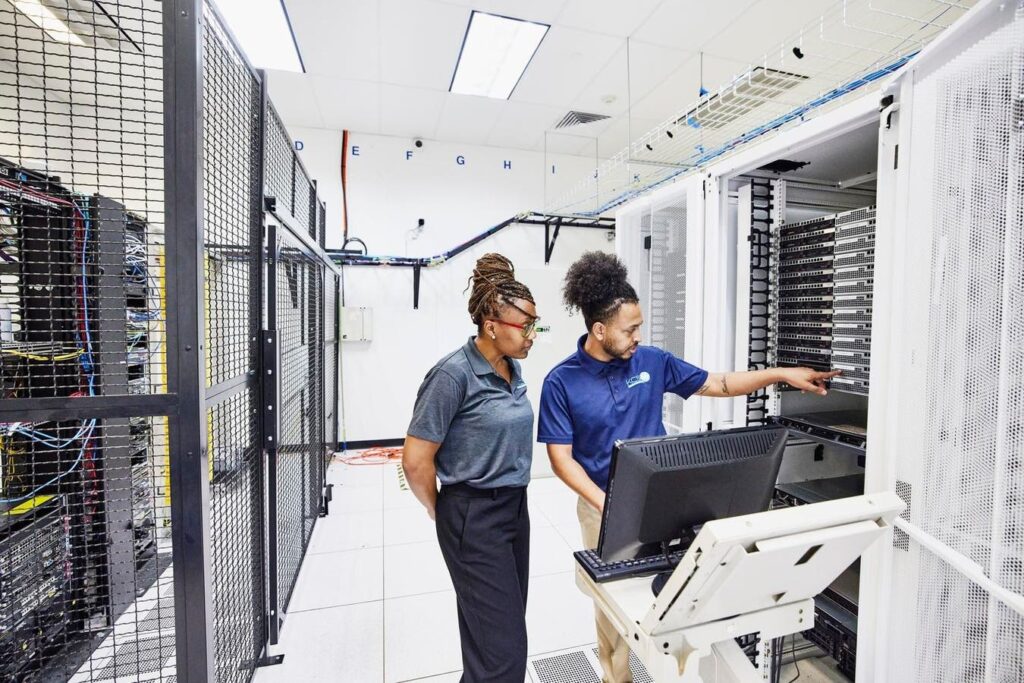Sheila Rohra, CEO of Hitachi Vantara.
We are entering a defining era for enterprise infrastructure. The explosive growth of AI, combined with the relentless pace of cloud and edge computing, has transformed data centers from cost centers into mission-critical engines of innovation. Yet, as data volumes skyrocket and workloads grow increasingly complex, many organizations are discovering that their existing infrastructure is ill-equipped to handle the demands of modern digital transformation.
In today’s environment, data needs to be secure, reliable and available when and where it’s needed. AI projects’ success, operational resilience and long-term sustainability depend on it. To address these challenges, I believe we need to reimagine the role of the data center.
From Cost Center To Strategic Asset
Traditionally, data centers were viewed as necessary overhead—expensive but unavoidable. But as AI and automation become more central to business strategy, data centers are evolving into high-value assets that enable speed, intelligence and agility across the enterprise.
Recent findings from my company’s State of Data Infrastructure Survey underscore this shift. Nearly two in five (37%) U.S. IT leaders identified data quality as the top barrier to successful AI adoption. Yet many are still falling short when it comes to foundational data readiness. Only 38% say their data is available when needed, and just 33% report that the majority of their AI model outputs are accurate. These numbers highlight a glaring disconnect between digital ambition and infrastructure readiness.
The Rising Demand For Data Infrastructure
AI has dramatically increased the burden on enterprise storage and computing systems. Data demands are expected to nearly double by 2026, and much of that data is unstructured, creating challenges for storage, governance and analysis.
Despite this, too few organizations are actively preparing. Our study found that almost half (47%) are not tagging data for visualization, 26% don’t review their data sets for quality, and only 3% are using sandbox environments to safely test and iterate on AI applications, which raises concerns around both data integrity and security. And research indicates that approximately 80% of enterprise data is unstructured, further compounding the challenge of managing data for AI readiness.
These gaps suggest a need for better infrastructure and a more strategic mindset. So, how can business leaders respond?
Rethinking Infrastructure Strategy
1. Align data infrastructure to your company’s long-term transformation goals.
Start by performing an audit of your current infrastructure to determine what steps need to be taken to meet your company’s AI and digital aspirations. This means determining whether or not your existing systems are modular, scalable and can handle future workloads. Encourage cross-functional communication between your IT, data and strategy teams to ensure infrastructure decisions are aligned with company-wide objectives, not just technical requirements. I also recommend creating a regular review cycle to reassess infrastructure performance against evolving business needs.
2. Embrace hybrid and multicloud models.
To enable seamless data movement across hybrid environments, ensure that your architecture is built on open standards and application programming interfaces (APIs). Enforce the same data classification and access controls across environments and employ orchestration tools that provide unified visibility and automation. Futureproof your plan by running small-scale test cases to ensure interoperability between cloud and on-prem environments before scaling up deployments.
3. Plan for quantum-readiness and future workloads.
Futureproofing begins with flexibility. Several ways to achieve this include building capacity buffers, leveraging containerization to provide portability and monitoring emerging tech with pilot programs or lab environments. Stay engaged with vendor roadmaps and industry benchmarks to stay ahead of trends. You can also embed “innovation reviews” into your IT governance cycle to determine readiness for future use cases like quantum, digital twins or LLM integration.
4. Prioritize sustainability.
While AI is power-hungry, only 32% of our survey respondents said that sustainability is a factor in their AI adoption. I believe this is a missed opportunity. In my experience, investing in sustainable infrastructure that’s designed for power efficiency and resource optimization can not only reduce environmental footprint but also help realize long-term cost savings and position businesses for growth.
A Roadmap For What’s Next
If data is the lifeblood of modern enterprises, then infrastructure is the circulatory system. And in that context, availability and resilience are non-negotiables. To build resilient infrastructure, you need a combination of hardware, software and process maturity. That means energy-efficient storage, AI-ready compute, trusted data governance practices and deep visibility across the data lifecycle.
To unlock AI’s full potential—and futureproof your business—treat data infrastructure as a central pillar of your enterprise strategy. This means building for security, sustainability and scale from the outset; enabling data mobility across hybrid environments; and ensuring that every AI initiative is grounded in quality, resilient data. In today’s AI-driven world, your data backbone could be your greatest competitive edge.
Forbes Business Council is the foremost growth and networking organization for business owners and leaders. Do I qualify?
Read the full article here

